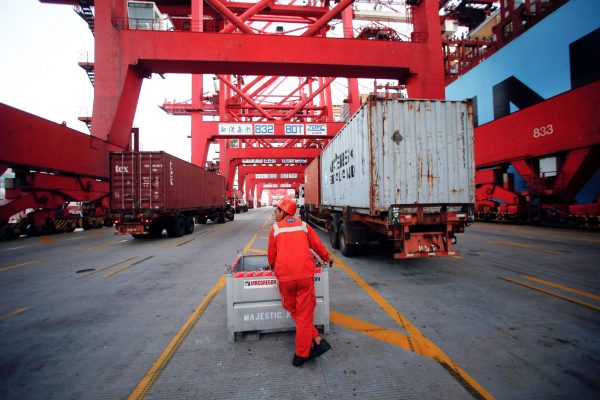Anti-dumping investigations and measures against China have increased significantly over the last two decades. In 1995, anti-dumping investigations and measures against China accounted for 13 per cent and 22 per cent respectively of global investigations and measures. By 2011, that had increased to 32 per cent and 38 per cent.
Anti-dumping investigations are undertaken by the affected country to determine whether an imported product is being ‘dumped’. A key aspect of anti-dumping investigations relates to the ‘normal value’ of the imported good. If the product is imported from a market-based economy, the ‘normal value’ is simply the price in the seller’s domestic market. But if the good is imported from a ‘nonmarket economy’ — which China is still defined as — then alternative methods are applied, including the use of surrogate country data. But this surrogate data usually leads to much higher estimations of dumping and thus penalties on the selling country.
During the 1995–2011 period, 74 per cent of the anti-dumping investigations against China resulted in the application of anti-dumping measures — measures designed to ‘correct’ the market price closer to the ‘normal value’
These higher dumping margins create stronger incentives for US producers to initiate anti-dumping actions against China. The increase in these actions is the result of changes in US anti-dumping laws after the Uruguay Round and the result of stricter requirements for tariff protection imposed by the World Trade Organization.
Despite their frequent use, measures such as anti-dumping actions don’t produce the expected benefits for producers or consumers in the affected importing country. Economists have long established that unless the importing economy has monopsonistic power, where a single buyer dominates the market, such measures reduce economic welfare in the importing economy. While producers are better off, consumers are substantially worse off, and the latter more than offsets the former. The asymmetry in the incentives of producers and consumers to lobby for such measures is perhaps the most prominent explanation for why countries engage in actions such as anti-dumping measures despite the overall loss of welfare.
While the increase in anti-dumping actions initiated by the United States against China is overall a negative for the US economy, it is evident that US producers have successfully persuaded the general public and policymakers that protecting them from ‘unfairly’ low prices is warranted. But how effective are anti-dumping actions against China in terms of protecting US producers?
Using data on US imports, anti-dumping investigations alone cause a reduction in the volume and value of imports from China as well as an increase in the price of those goods in the US market. O The anti-dumping decision, in cases where the decision was affirmative, provides similar results. Critically, these effects are short-lived and dissipate approximately two years after the anti-dumping decision.
In addition, anti-dumping actions against China prompt a substitution effect — the US simply imports more from other countries — especially within the first two years after the anti-dumping investigation. Prices of goods imported from other countries also increase following the anti-dumping measures against Chinese imports.
Overall, there is substantial reason to doubt the effectiveness of anti-dumping actions against China as mechanisms for protecting US producers.
Minsoo Lee is a senior economist at the Asian Development Bank (ADB). This article is based on a recent paper by the author in the Asian Economic Journal. The views expressed are his own, and do not necessarily reflect ADB’s views or policies.


The use of anti-dumping against China by some western countries, as analysed by the author in this post, clearly demonstrate that it is ineffective in protecting the domestic producers and is more likely than not, harmful to both their domestic consumers as well as the overall welfare of those countries.
The main reason why some of those countries still hold China as hostage by refusing to acknowledge the market economy status of China, simply is due to the wish to contain China’s economic rise (or more realistically the pace or speed of that rise) and the strong lobbies by some of their domestic producers to protect their increasingly lost competitiveness as evidenced by changing in comparative advantages internationally.
Strong or stronger leaderships in those countries are badly needed to accept that the use of anti-dumping measures in the currently unfair and unjust international trading system and rules is detrimental to their national interests.
But sadly, politics can often trump rationality in economics in many if not all countries. It is particularly true in the contest where domestic politics is mixed with international politics, especially when China is concerned party.
In this case it is not hard to understand why the pure rational economics is compromised in reality. Economic models aiming at capturing the reality need to reflect this to be more effective and truthful.
I commend the objective analysis of this post by Minsoo Lee, that tells what the truth is.